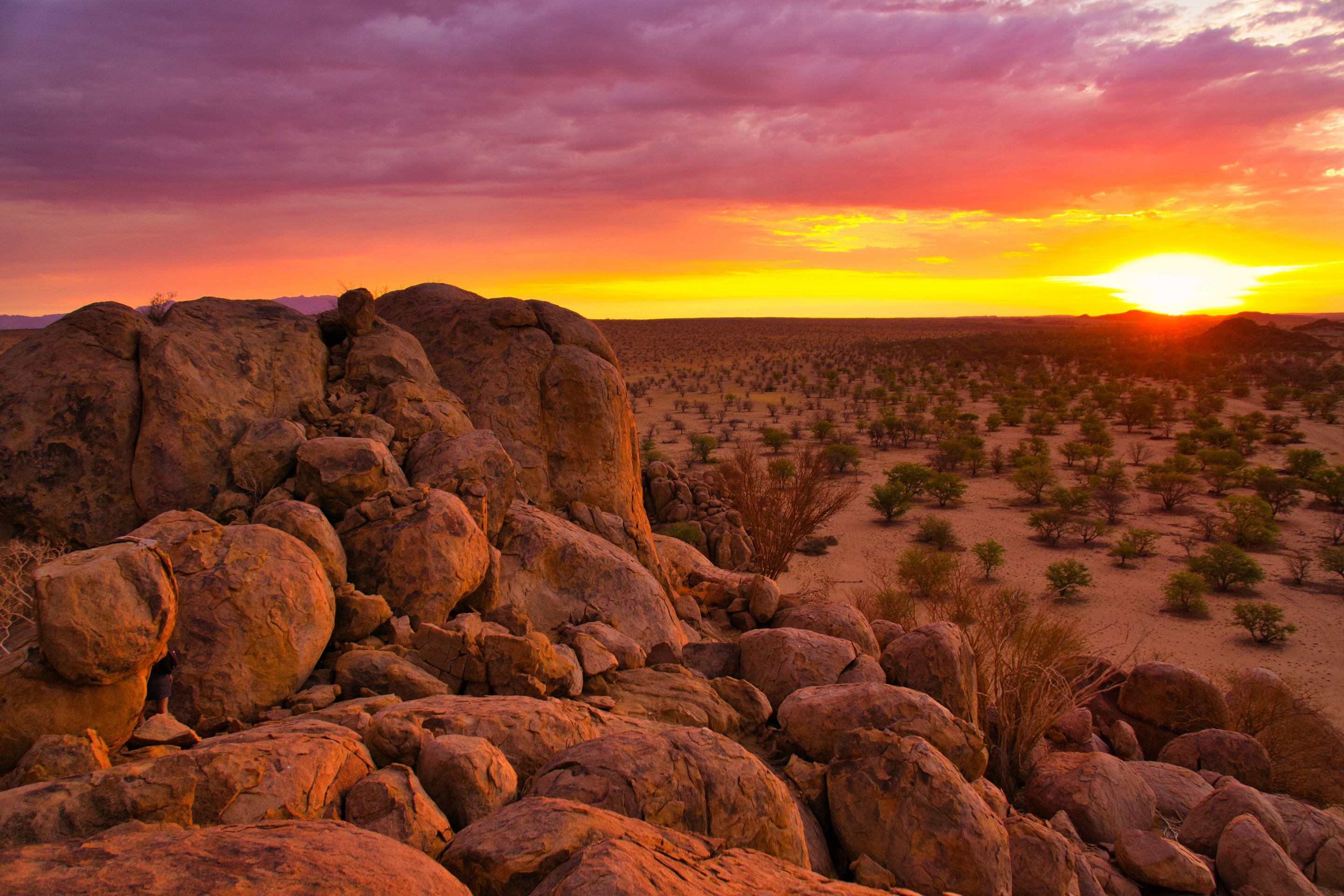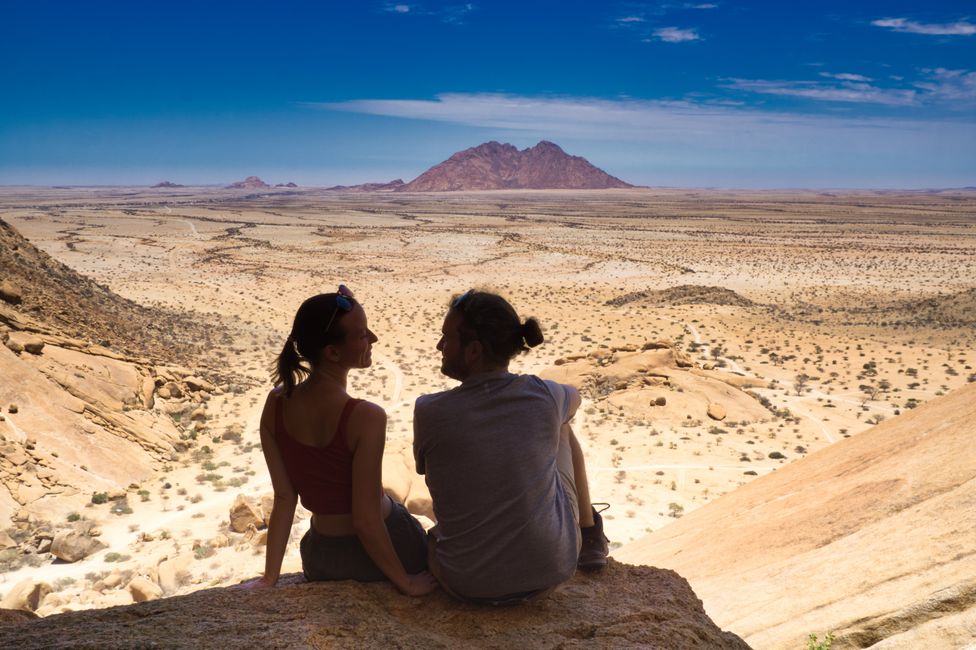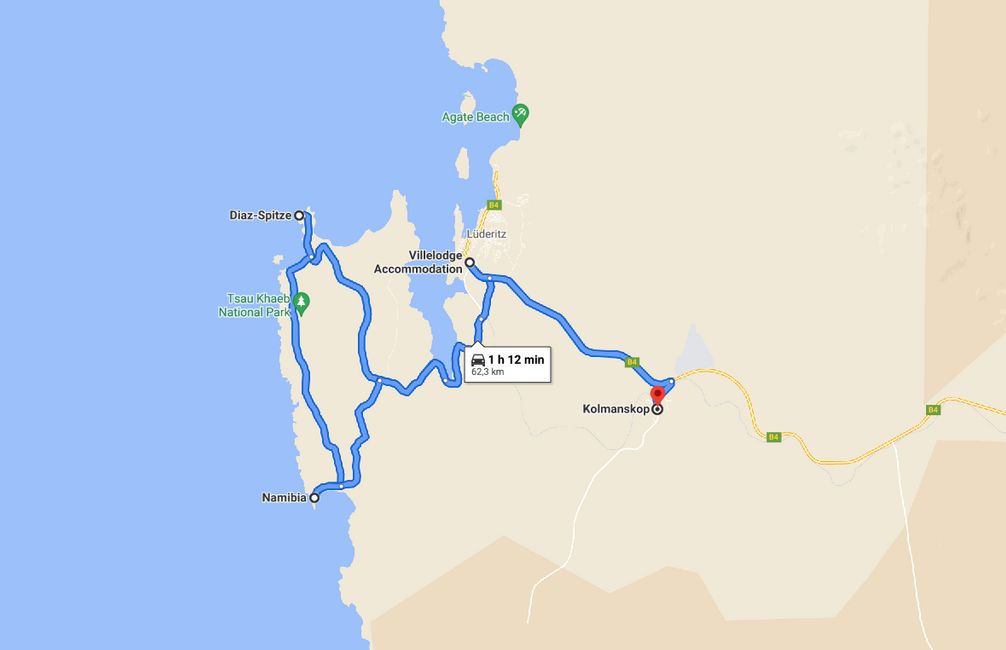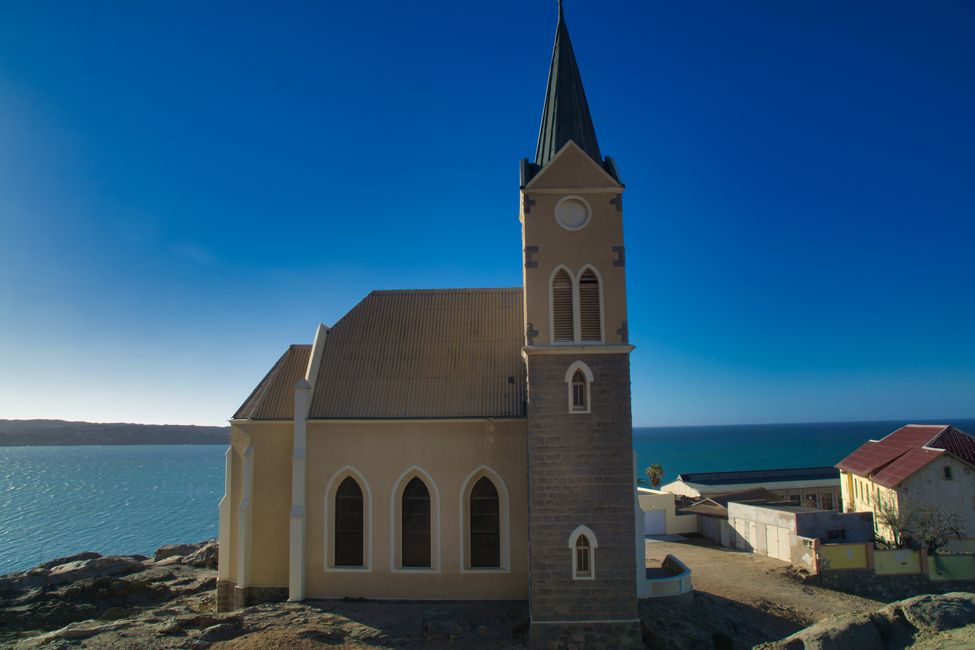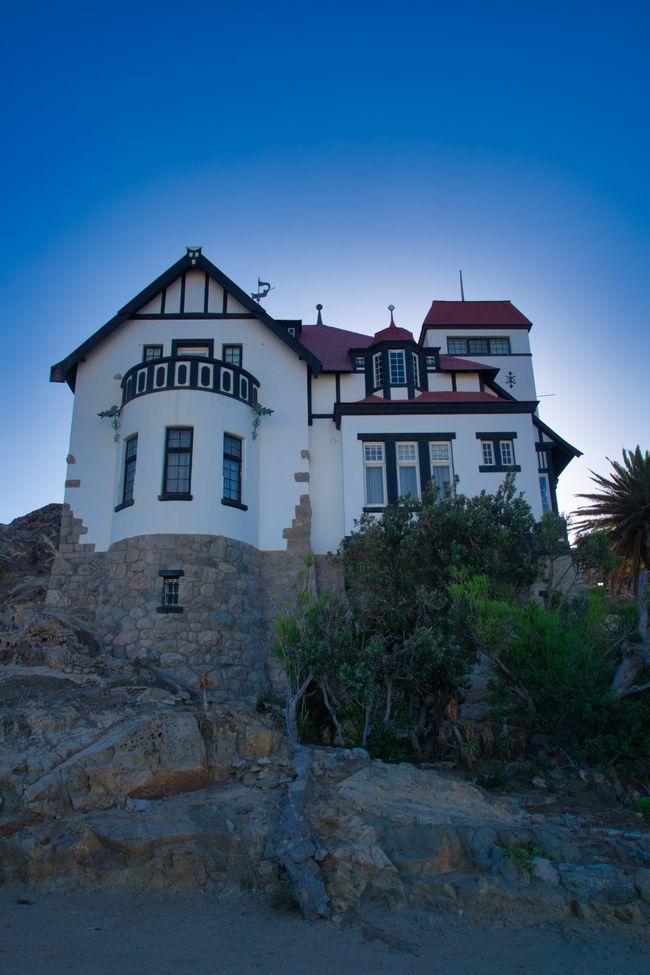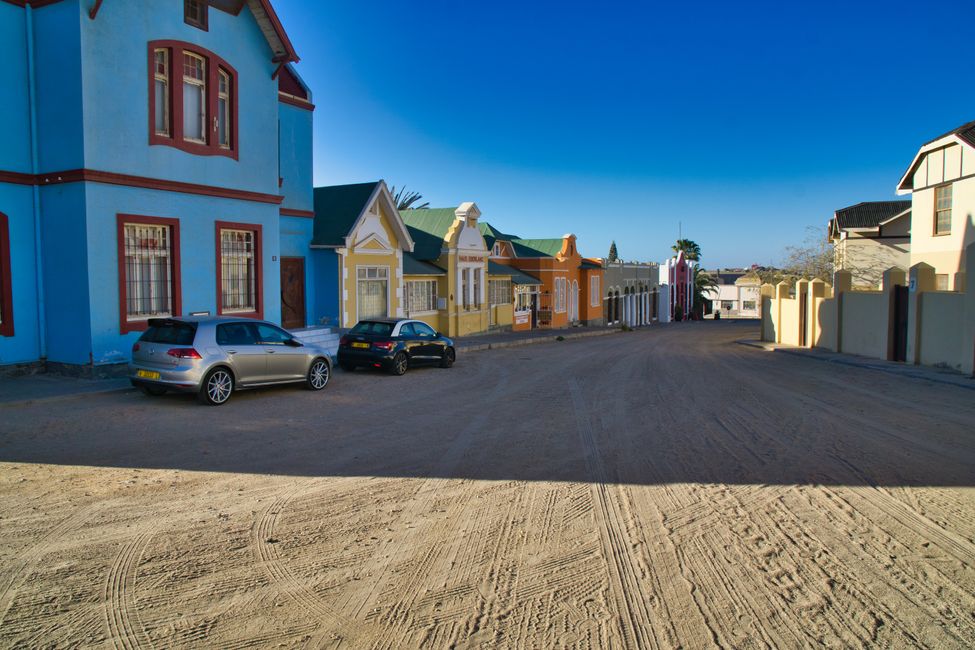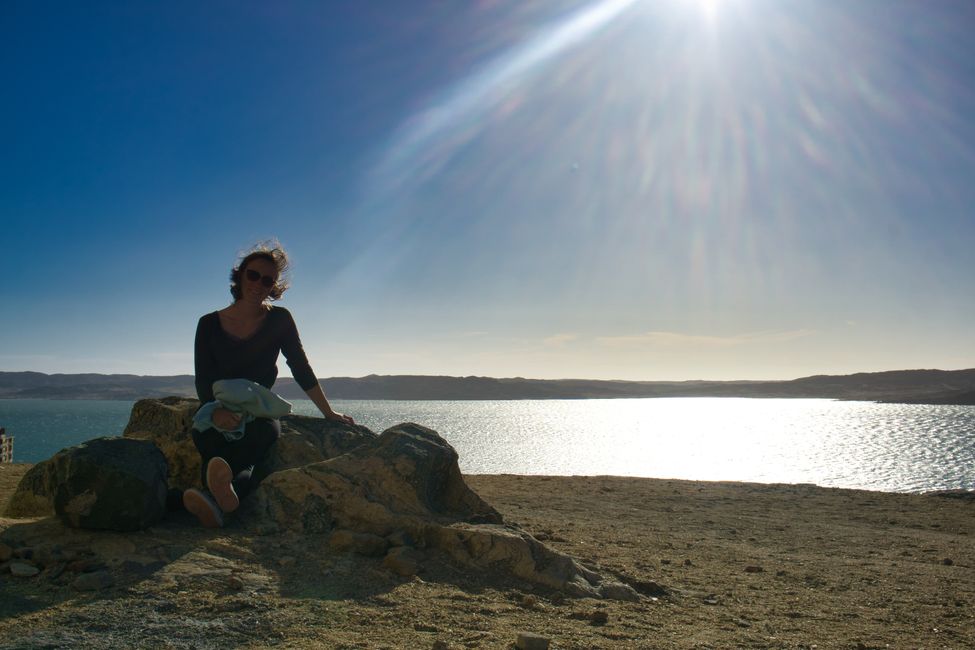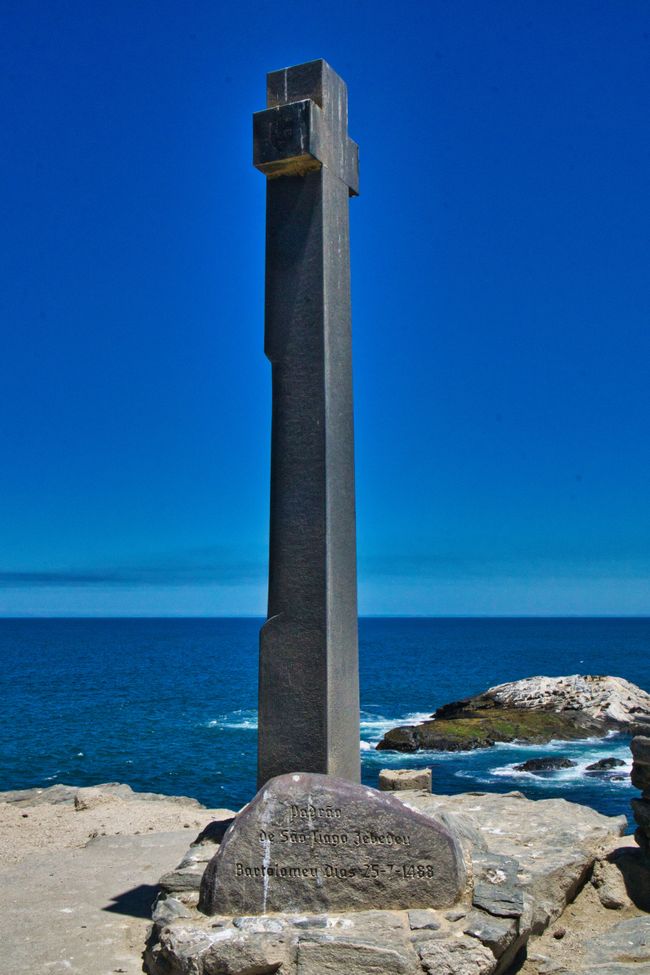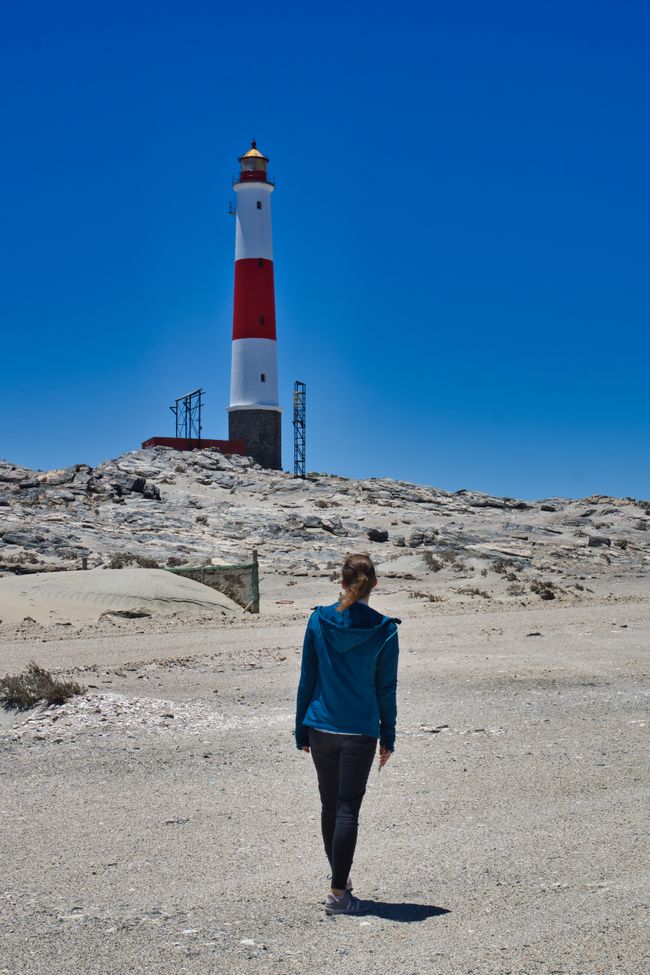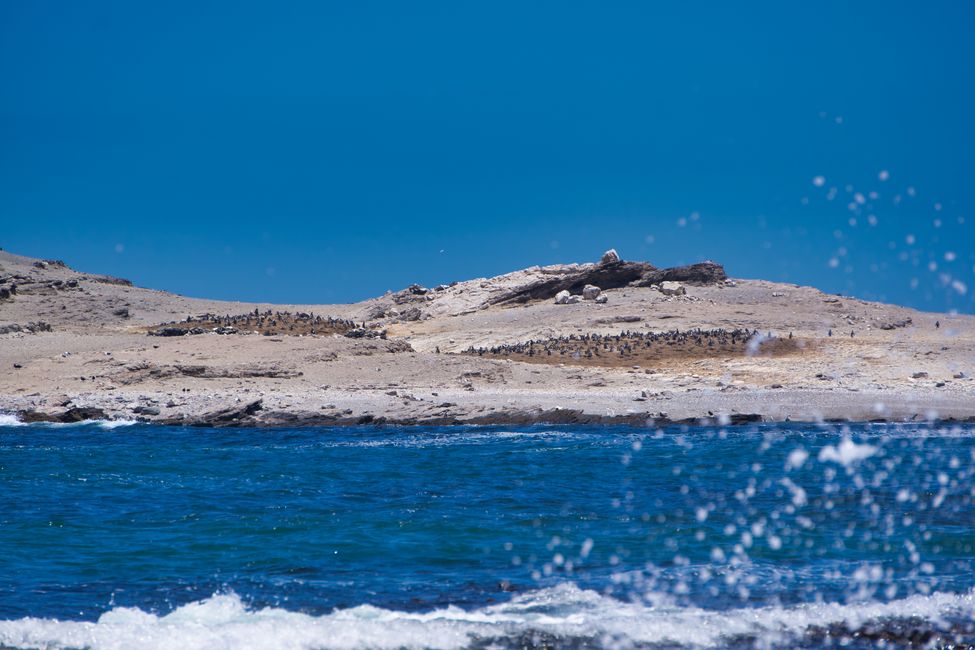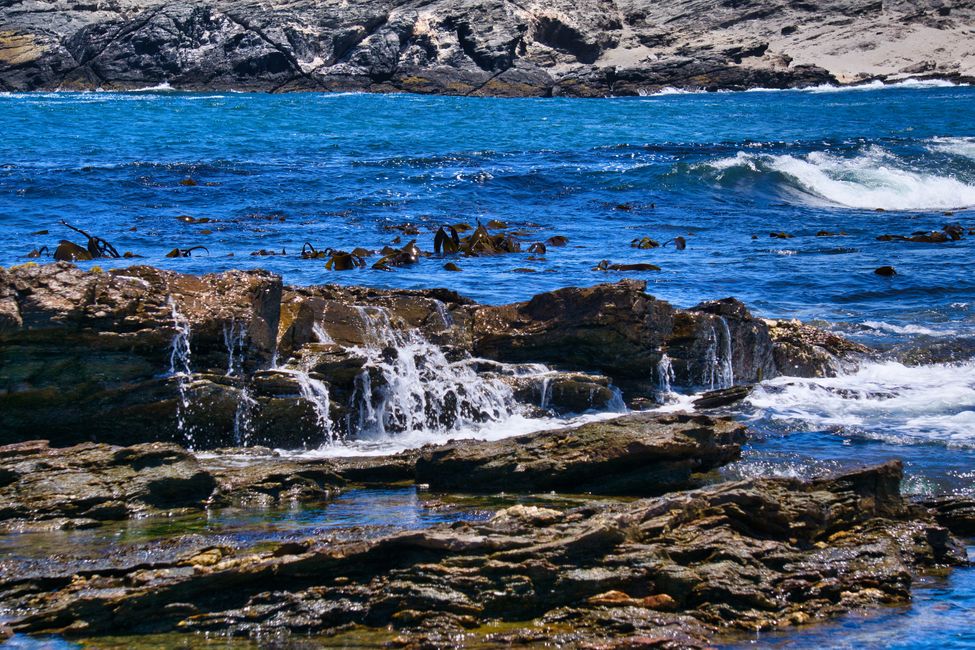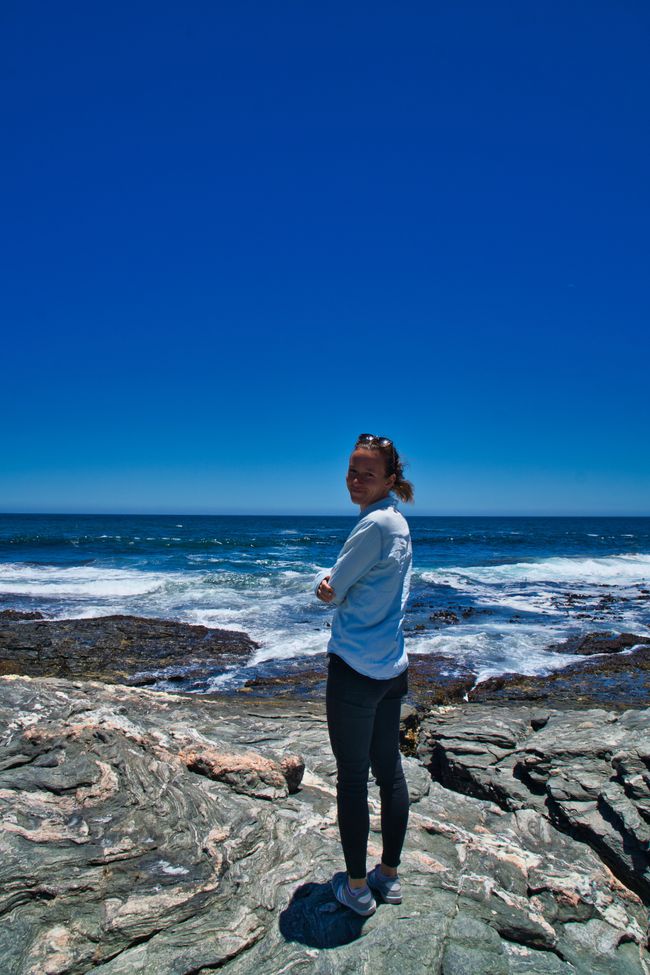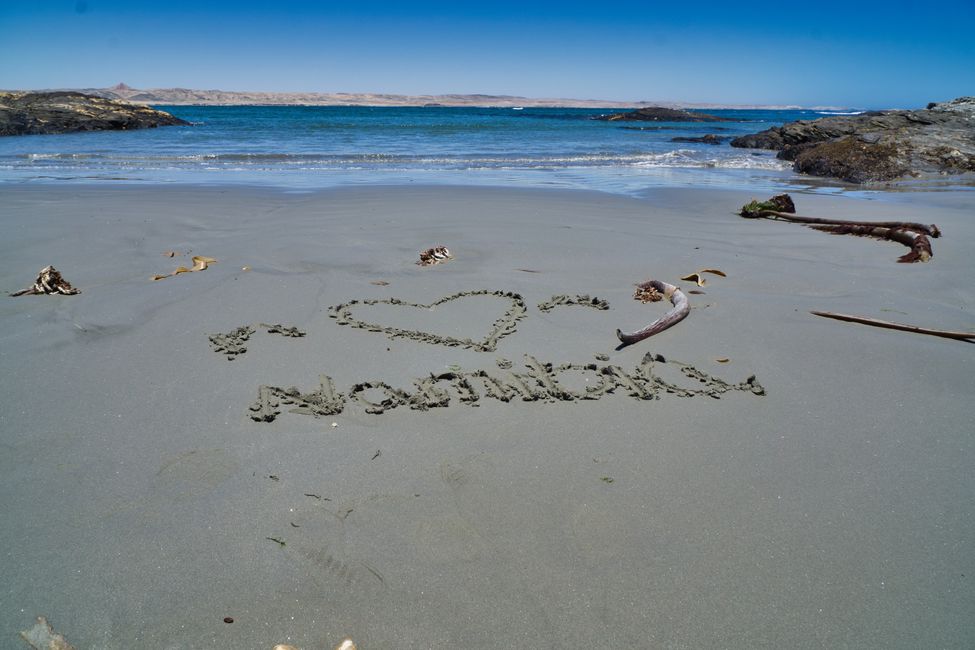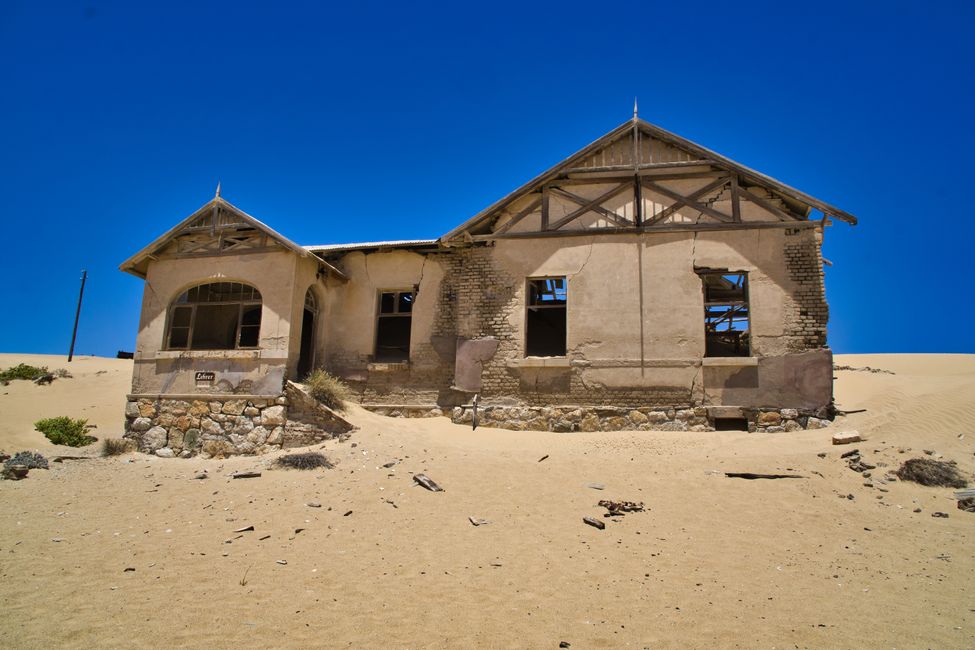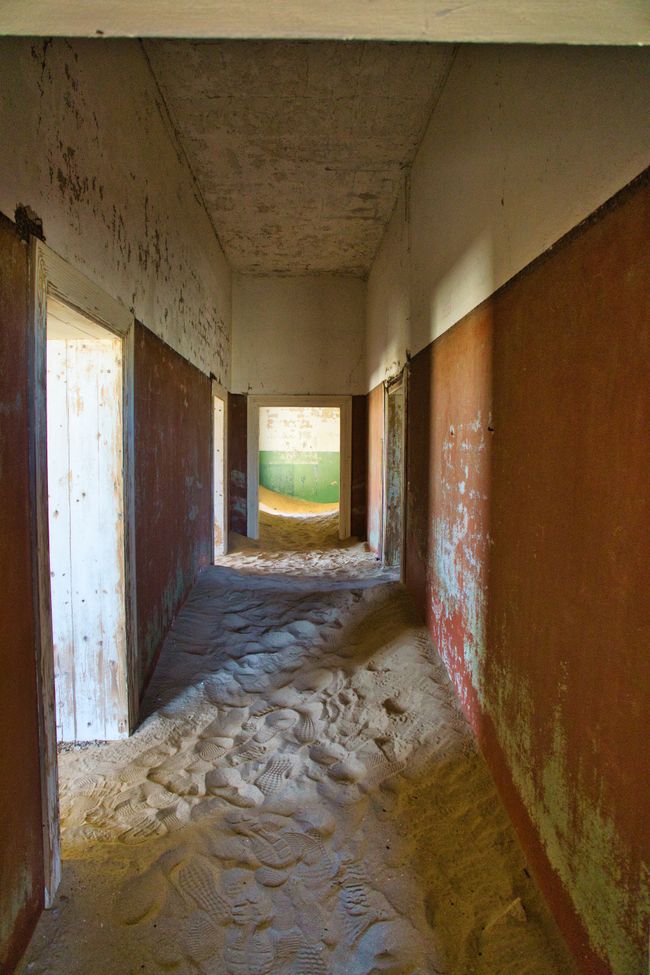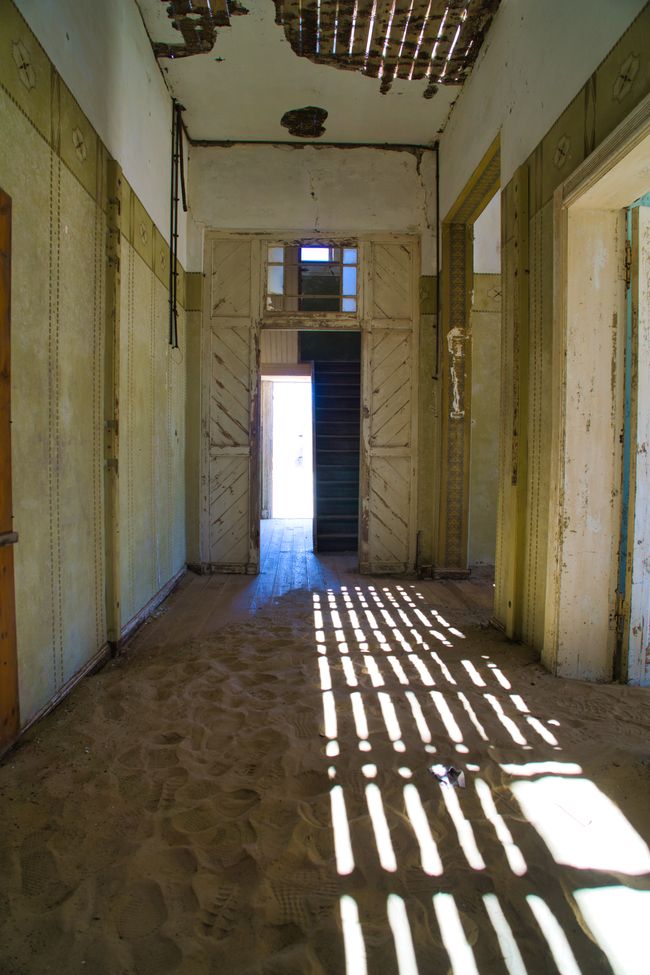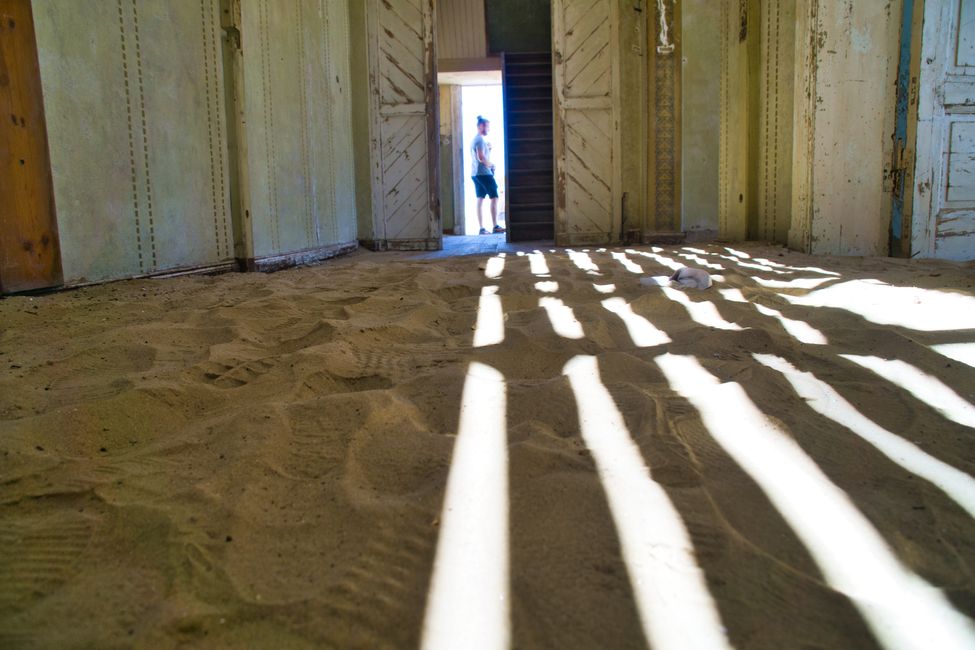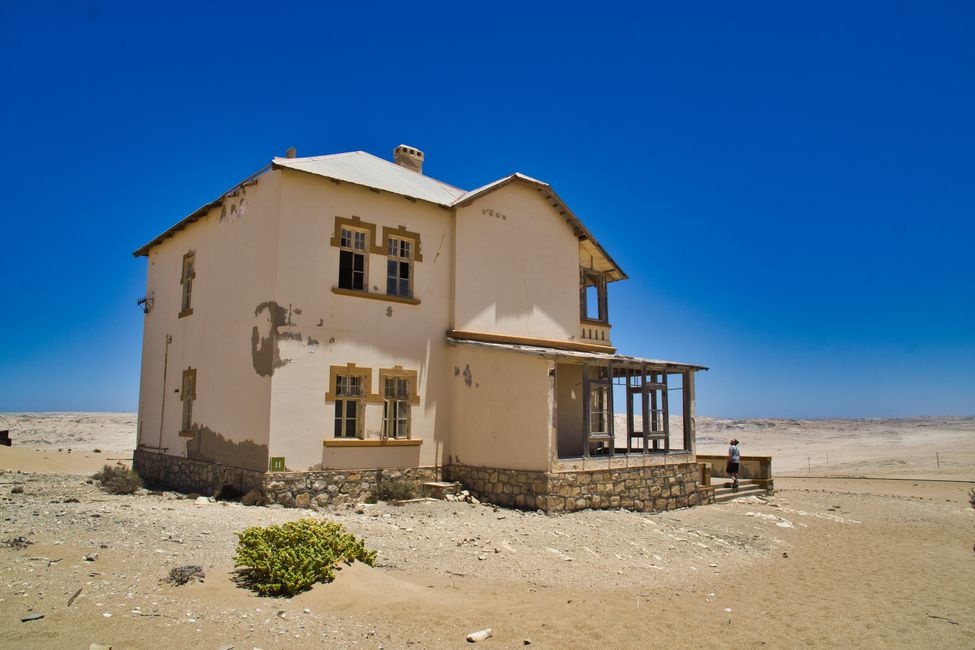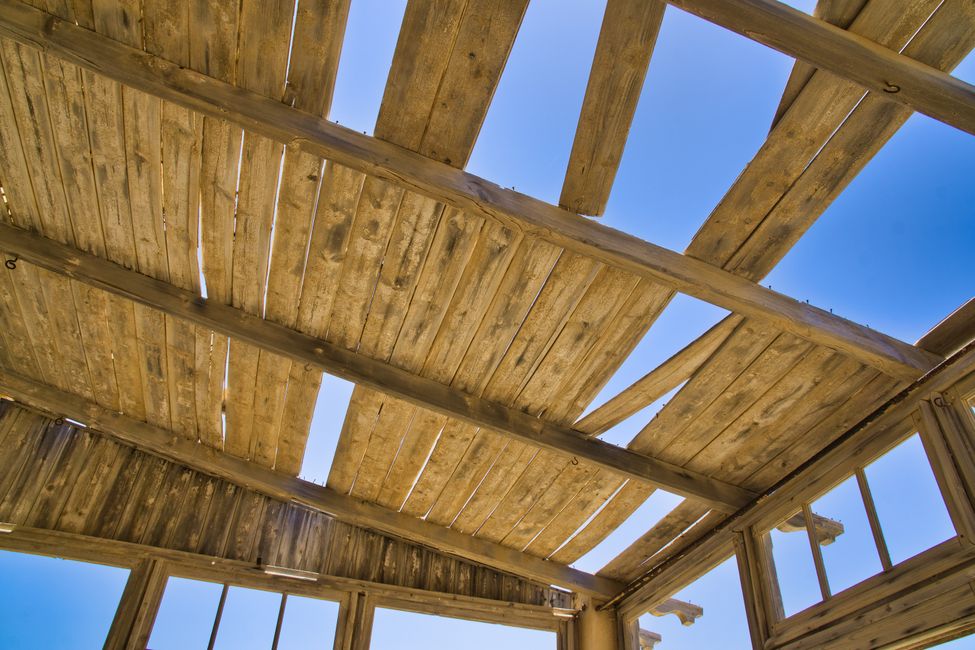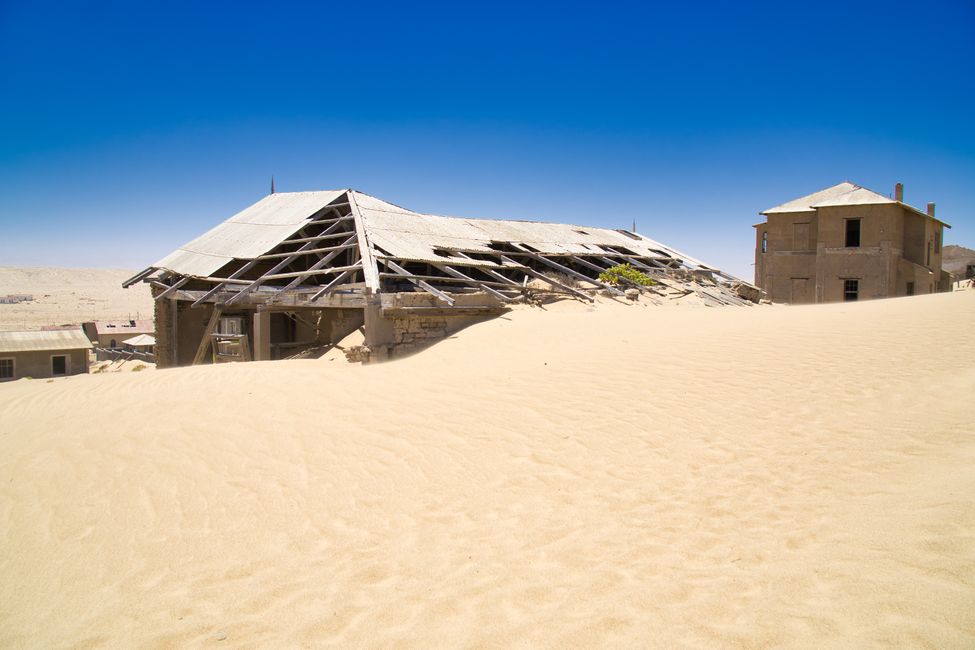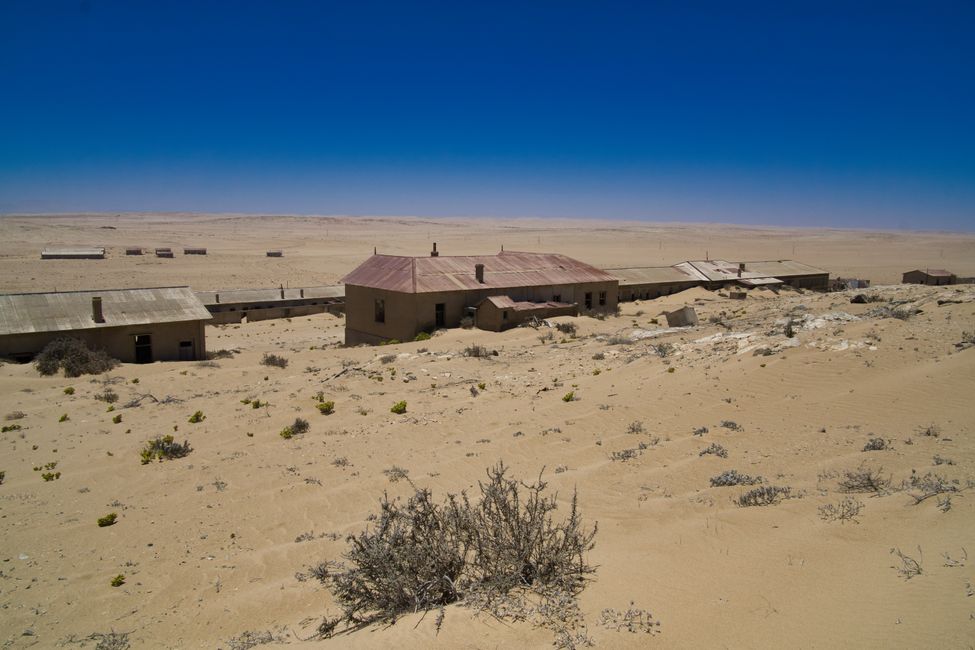Lüderitz
Közzétett: 07.12.2021
Feliratkozás a hírlevélre
Lüderitz
After our stop in the Tiras Mountains, we leave the Namib-Naukluft National Park and continue to Lüderitz. The gravel road takes us through the colorful Tiras Mountains, past ostriches, oryx antelopes, and horses, to the south, where we are driving on one of the few paved 'freeways' for the first time in a long time. It may be single-lane and without a shoulder, but it is as close as it gets to a highway here in Namibia. According to travel guides, the internet, and reports from friends, Lüderitz is always windy, so we have booked an Airbnb for once, which we discover right after entering the town of 12,000 inhabitants. Not the most beautiful location, but we even have a view of the sea, albeit from a distance. In between is a railway line, but we have not seen a single train in Namibia in the past few weeks. There are no public transportation options like buses here. Many Africans hitchhike to get from A to B, or they cover the huge distances on foot. This sometimes leads to us seeing individuals trekking through the undergrowth in the middle of nowhere, dozens of kilometers away from the nearest town. We have no idea where they come from or where they are going, but it must be a long way. Nevertheless, we have been advised from all sides not to pick up hitchhikers in Africa, so we always drive past them on our way.In Lüderitz, we can actually get from A to B very quickly, so we can leave the car behind and explore the city on foot. Since it is Sunday, the streets are deserted, so we are spared from pushy street vendors and beggars for now. We take advantage of these pleasant conditions to walk to the harbor and visit the few sights such as the rock church high above the city or the Goerke House, a colonial masterpiece with Art Nouveau elements. Thanks to its proximity to the sea, there are numerous seafood restaurants here, so we decide to treat ourselves for an evening. Something we never do.
The next day, we explore the peninsula south of Lüderitz, which represents the southernmost freely accessible coastal section of Namibia before the diamond restricted area begins. First, we drive to the tip of the peninsula, Dias Point, where on July 25, 1488, the Portuguese explorer Bartolomeu Dias, who was the first European to sail around the southernmost tip of Africa, erected a cross to proclaim Portugal's possession. From Dias Point, you can look directly down into the Atlantic. You can even spot a few seals among the rocks. A little further away is Halifax Island, where we use binoculars to discover hundreds of penguins happily waddling around their small kingdom. A bit further south, the rocky coast transitions into lonely lagoons with small sandy beaches.Apart from a tiny camping site and a coffee shop, there is nothing here, only untouched nature and a lighthouse built by the Germans during colonial times to prevent ships from crashing into the many high rocks. We are the only tourists for miles around, and the last time we saw locals or houses was in Lüderitz. It's surprising that the camping site and coffee shop actually make sense in such a remote place. To support the local gastronomy (and because we rarely indulge ourselves), we strengthen ourselves with omelette and toast before continuing our journey.Before we leave Lüderitz and the coastal region the next day, we are woken up by an extremely loud honking at night. A freight train! For the first time in three weeks, we actually see a train in Namibia! Fortunately, it makes such a loud noise at midnight, otherwise we would have missed this spectacle. Since railway barriers apparently haven't been introduced in Namibia yet, we are a bit more cautious when crossing the tracks from now on. However, if all trains crawl at such a snail's pace, we could even fry an egg on the hot tracks before we actually get run over by this seemingly prehistoric dinosaur.
As a stopover on our journey away from Lüderitz, the program includes Kolmanskop (or Kolmanskuppe in German). In this settlement originally built by Germans, the first diamonds were found over a hundred years ago, which quickly attracted many people to profit from it. After the current restricted area with Oranjemund became more profitable in this regard, all residents left the town within a few years. The houses have been abandoned since the 1950s. Over the years, they were covered by sand due to their location amidst wandering dunes, so the present ghost town offers a truly impressive sight. During the obligatory guided tour, we learn about the history of the place, which even had a school, a swimming pool, and a bowling alley (!), and then explore a few of the sand-filled houses on our own, some of which are on the verge of collapsing and are only supported by the masses of sand. In Kolmanskop, it becomes apparent once again that nature eventually reclaims everything and outlasts us humans. Truly a fascinating place with a lot of history.
After our stop in the Tiras Mountains, we leave the Namib-Naukluft National Park and continue to Lüderitz. The gravel road takes us through the colorful Tiras Mountains, past ostriches, oryx antelopes, and horses, to the south, where we are driving on one of the few paved 'freeways' for the first time in a long time. It may be single-lane and without a shoulder, but it is as close as it gets to a highway here in Namibia. According to travel guides, the internet, and reports from friends, Lüderitz is always windy, so we have booked an Airbnb for once, which we discover right after entering the town of 12,000 inhabitants. Not the most beautiful location, but we even have a view of the sea, albeit from a distance. In between is a railway line, but we have not seen a single train in Namibia in the past few weeks. There are no public transportation options like buses here. Many Africans hitchhike to get from A to B, or they cover the huge distances on foot. This sometimes leads to us seeing individuals trekking through the undergrowth in the middle of nowhere, dozens of kilometers away from the nearest town. We have no idea where they come from or where they are going, but it must be a long way. Nevertheless, we have been advised from all sides not to pick up hitchhikers in Africa, so we always drive past them on our way.In Lüderitz, we can actually get from A to B very quickly, so we can leave the car behind and explore the city on foot. Since it is Sunday, the streets are deserted, so we are spared from pushy street vendors and beggars for now. We take advantage of these pleasant conditions to walk to the harbor and visit the few sights such as the rock church high above the city or the Goerke House, a colonial masterpiece with Art Nouveau elements. Thanks to its proximity to the sea, there are numerous seafood restaurants here, so we decide to treat ourselves for an evening. Something we never do.
The next day, we explore the peninsula south of Lüderitz, which represents the southernmost freely accessible coastal section of Namibia before the diamond restricted area begins. First, we drive to the tip of the peninsula, Dias Point, where on July 25, 1488, the Portuguese explorer Bartolomeu Dias, who was the first European to sail around the southernmost tip of Africa, erected a cross to proclaim Portugal's possession. From Dias Point, you can look directly down into the Atlantic. You can even spot a few seals among the rocks. A little further away is Halifax Island, where we use binoculars to discover hundreds of penguins happily waddling around their small kingdom. A bit further south, the rocky coast transitions into lonely lagoons with small sandy beaches.Apart from a tiny camping site and a coffee shop, there is nothing here, only untouched nature and a lighthouse built by the Germans during colonial times to prevent ships from crashing into the many high rocks. We are the only tourists for miles around, and the last time we saw locals or houses was in Lüderitz. It's surprising that the camping site and coffee shop actually make sense in such a remote place. To support the local gastronomy (and because we rarely indulge ourselves), we strengthen ourselves with omelette and toast before continuing our journey.Before we leave Lüderitz and the coastal region the next day, we are woken up by an extremely loud honking at night. A freight train! For the first time in three weeks, we actually see a train in Namibia! Fortunately, it makes such a loud noise at midnight, otherwise we would have missed this spectacle. Since railway barriers apparently haven't been introduced in Namibia yet, we are a bit more cautious when crossing the tracks from now on. However, if all trains crawl at such a snail's pace, we could even fry an egg on the hot tracks before we actually get run over by this seemingly prehistoric dinosaur.
As a stopover on our journey away from Lüderitz, the program includes Kolmanskop (or Kolmanskuppe in German). In this settlement originally built by Germans, the first diamonds were found over a hundred years ago, which quickly attracted many people to profit from it. After the current restricted area with Oranjemund became more profitable in this regard, all residents left the town within a few years. The houses have been abandoned since the 1950s. Over the years, they were covered by sand due to their location amidst wandering dunes, so the present ghost town offers a truly impressive sight. During the obligatory guided tour, we learn about the history of the place, which even had a school, a swimming pool, and a bowling alley (!), and then explore a few of the sand-filled houses on our own, some of which are on the verge of collapsing and are only supported by the masses of sand. In Kolmanskop, it becomes apparent once again that nature eventually reclaims everything and outlasts us humans. Truly a fascinating place with a lot of history.
Feliratkozás a hírlevélre
Válasz
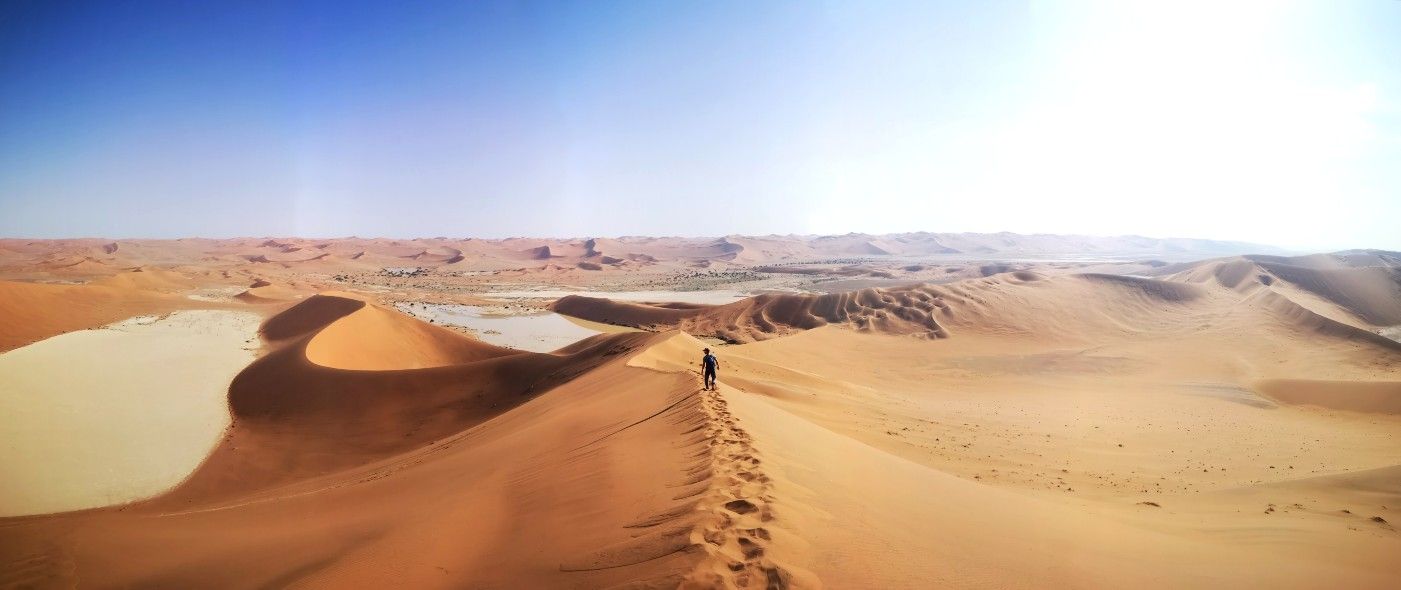
Namíbia utazási jelentések
